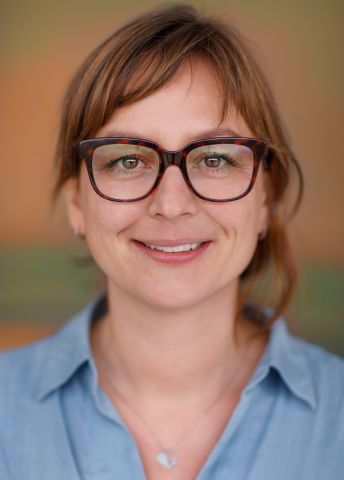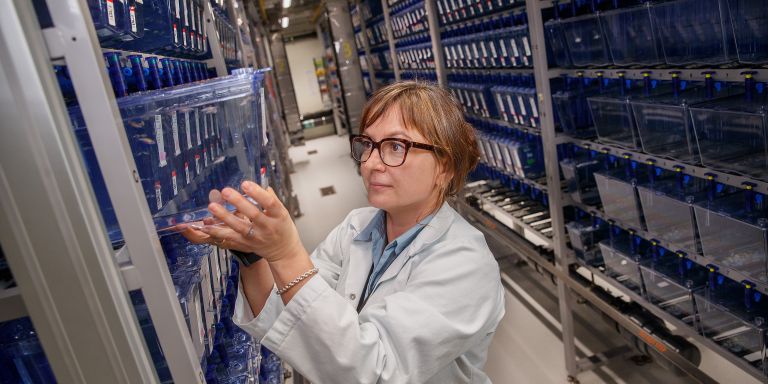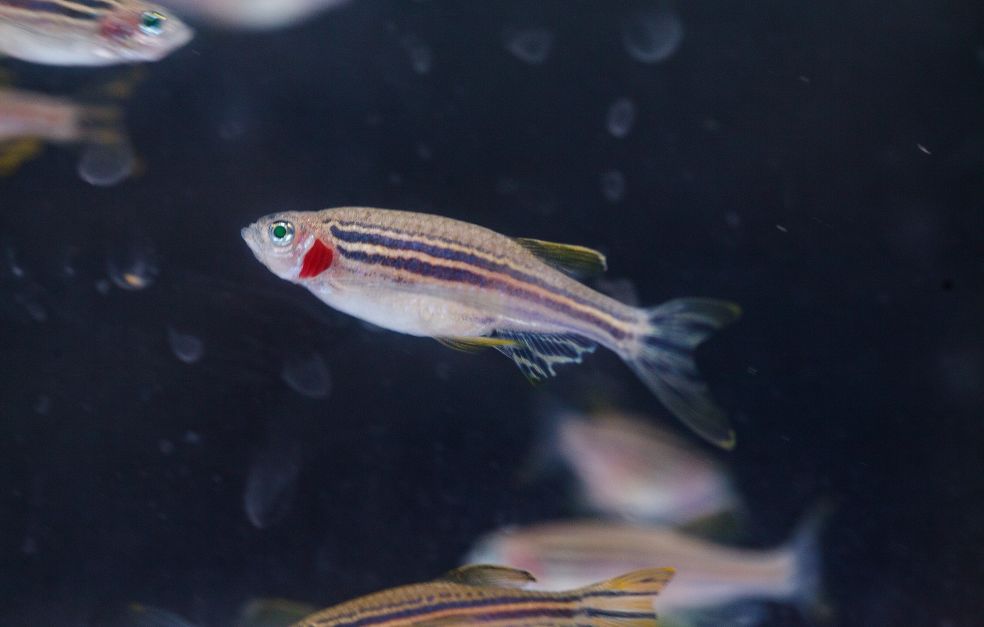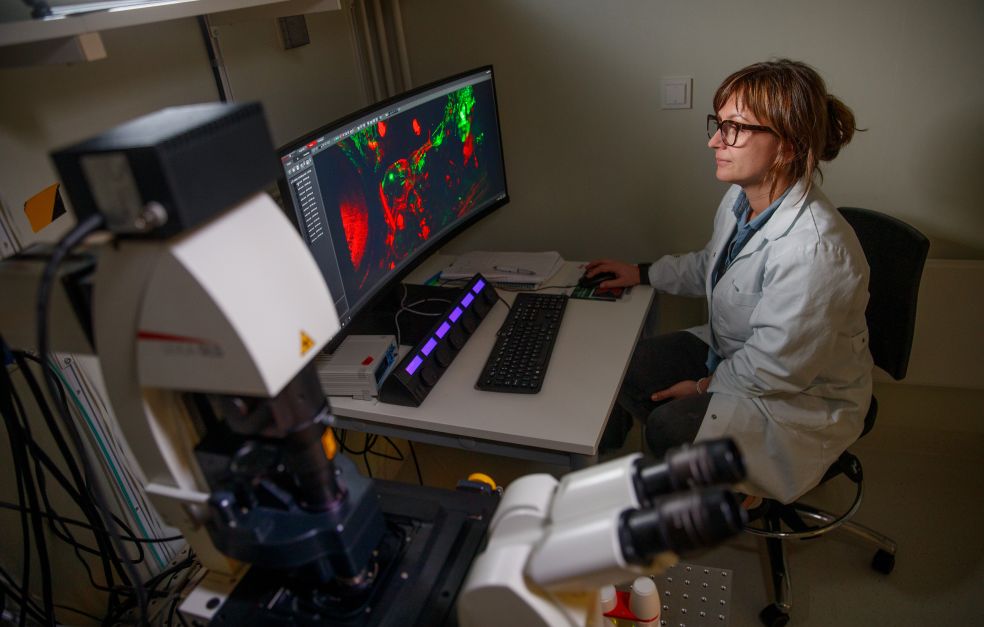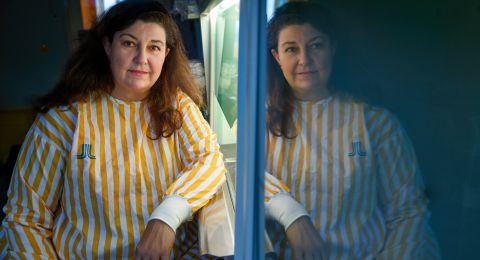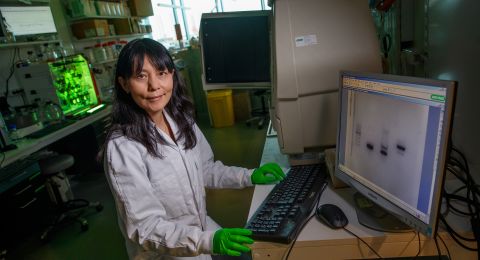Kaska Koltowska has identified unique DNA sequences, enhancers, which are active in lymphatic vessels. She hopes that new research will reveal new hidden secrets of the lymphatic vessel formation.
Katarzyna “Kaska” Koltowska
Associate Professor of Vascular Developmental Biology
Wallenberg Academy Fellow, grant extended 2022
Institution:
Uppsala University
Research field:
How formation of the lymphatic system is regulated at molecular level. One aim is to identify principles underlying lymphatic vessel biology.
The lymphatic vascular network consists of vessels that transport excess fluid (lymph) from tissues and absorb fat in the intestine. These vessels reach nearly all tissues and organs in the body and are also important highways for immune surveillance.
However, if the formation of these vessels goes wrong, lymphatic vessels could be damaged which can cause health problems, like swelling of legs and arms. Such diseases, arising from faulty lymphatic vessels, still have no cure.
Having long been an unexplored area, lymphatic vessels are now being intensively studied worldwide. Many researchers are examining these vessels to improve our understanding of how they form and function at cellular and molecular levels.
Kaska Koltowska is one of them. She is an associate professor at Uppsala University, with a PhD in developmental biology.
During her first period as a Wallenberg Academy Fellow, she studied the early formation of lymphatic vessels and the genes that control their growth and distribution in the body.
Lymphedema is a disease with 250 million sufferers worldwide. It causes swelling and fluid buildup in parts of the body. Some people have it from birth; others develop it later in life.
“Each cell contains a copy of the body’s DNA blueprint – its genome, but only certain genes are activated in the cell, and they determine its nature.”
The enhancers, short DNA-sequences, code information about gene regulation.
Providing a boost
These segments act like dimmer switches, modulating gene activity up or down and providing a cell with specific instructions at the correct time and place, Koltowska says.
They are called ‘enhancers’ or non-coding regulatory elements and are one of the keys to understanding how lymphatic endothelial cells acquire their identity. Enhancers can be found in fish, other vertebrates and humans, for example.
Koltowska began building her research group at the Rudbeck Laboratory in Uppsala in 2018. A few years later, she and other researchers presented a surprising discovery about how enhancers regulate the lymphatic vessel formation.
“We studied these DNA elements in the transparent embryos of zebrafish, which we use as a model organism.”
The researchers took such a DNA sequence from mice, inserted it into the zebrafish embryo genome, and then observed the enhancer functions are conserved across vertebrates, by looking at the development in the fish under a microscope.
Form functional cells
The enhancers exist in the DNA strings of all cells. But some are only activated in lymphatic endothelial cells – in the cells in the inside lining of lymphatic vessels. This activation regulates cell differentiation or other cellular processes that are needed to build functional vessels.
“It was really cool. But the discovery we made in 2023 gave rise to many questions, which we are now working on,” she says.
The body’s system for determining which genes should be turned on or off in different cells is called epigenetics. It is well known in cardiovascular research that damage or changes to this system can be a factor in disease. However, the epigenetics of the lymphatic system is largely unexplored.
For example, researchers do not fully understand when a specific gene is activated or not in lymphatic endothelial cells.
This is what the Uppsala researchers aim to change: they want to ascertain which other genes are activated in these cells and what the signaling pathways look like. They also want to find out what happens if, for example, the enhancer mutate – could this cause diseases in humans?
Koltowska and her team are collaborating with clinical researchers in Sweden, Belgium, Germany and England who help patients with lymphedema.
She explains: “Lymphedema is a disease affecting 250 million people worldwide. It causes swelling and fluid buildup in parts of the body. People can either be born with it or develop it later in life.”
For instance, about 20 percent of cancer patients will develop lymphedema. The question is why only some patients, after lymph node removal, get the disease.
The role of enhancers
In the future, she wants to identify more enhancer sequences that are essential for building vessels and to understand epigenetic changes that underlay the function of these vessels.
The researcher’s hypothesis is that the chromatin – a three-dimensional structure made of DNA and proteins – is specifically shaped in lymphatic endothelial cells which could influence when genes are turned on or off in lymphatic endothelial cells. Interruption of some of these processes might trigger disruption of the vessel formation.
Koltowska says the plan is to expand the datasets to explore enhancer sequences across different vertebrates, including mammals.
“We’re making progress, but much work remains to be done.”
She hopes, however, that their research will one day help predict which lymphatic vessels are predisposed to malfunction.
– But predicting when such breakthroughs might occur is difficult.
Text Monica Kleja
Translation Maxwell Arding
Photo Magnus Bergström
